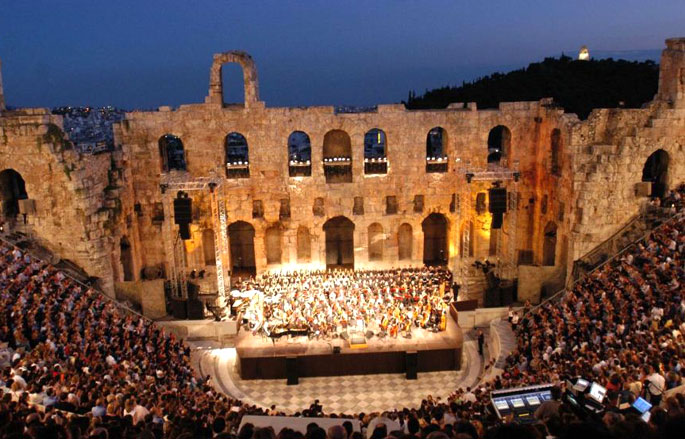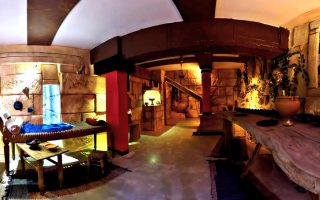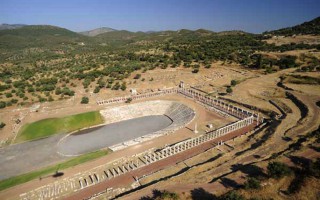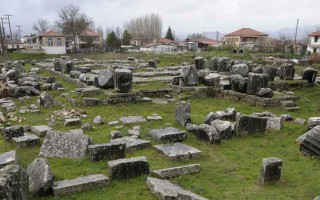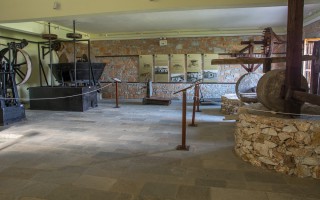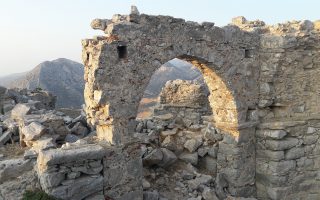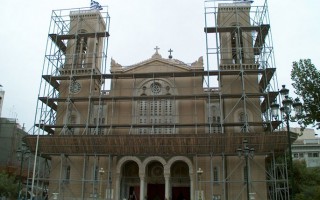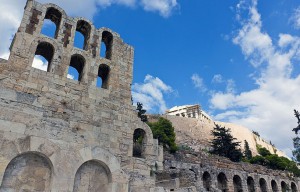 The Herod Atticus Odeon, or the Irodeion as it is called today, was built on the south-western slope of the rock of the Acropolis during the Roman era, by the Athenian magnate Herod Atticus, in memory of his wife Regilla. Following the city’s decline during the Byzantine era, the Odeon became a derelict and was buried under tons of dirt. During the subsequent Ottoman occupation, foreign visitors to the site gave the scant remnants many different names, most of them made up. It seemed as if the Irodeion would simply fade from memory.
The Herod Atticus Odeon, or the Irodeion as it is called today, was built on the south-western slope of the rock of the Acropolis during the Roman era, by the Athenian magnate Herod Atticus, in memory of his wife Regilla. Following the city’s decline during the Byzantine era, the Odeon became a derelict and was buried under tons of dirt. During the subsequent Ottoman occupation, foreign visitors to the site gave the scant remnants many different names, most of them made up. It seemed as if the Irodeion would simply fade from memory.
That is, until 1764, when British archaeologist, Chandler, reawakened interest in Herod Atticus Odeon. Then, in the 19th Century, excavations unearthed the ruins of the ancient theatre. Completely refurbished by the 1950s, the seats were now covered with Pentelic marble, and the orchestra with marble from Mt Hymettus. Since then the theatre has been used for high-level cultural productions during the summer season, mainly the Athens Festival.
Source: www.athensattica.gr


